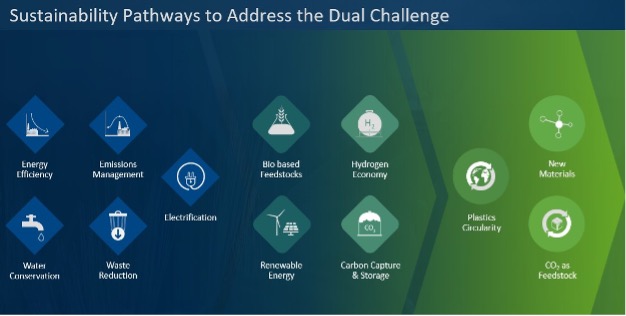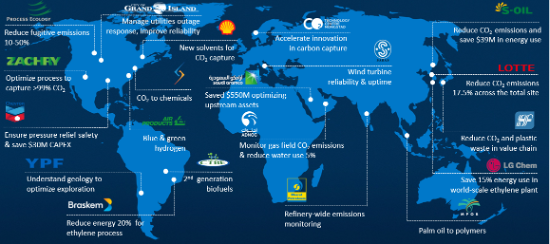As we prepare to leave 2022 behind, the road ahead is more uncertain than even in recent years. A year ago, much of the world was exiting the pandemic period and could look ahead with optimism, maybe even excitement. But by February the eruption of the conflict in Europe further upended markets just as recovery seemed possible.
The energy markets have been particularly turbulent and new emphasis has been placed on a concept discussed for more than a decade: the Energy Trilemma. The World Energy Council (WEC) introduced this index in 2010, highlighting the competing demands of energy security, affordability and sustainability. Since then, the WEC has been charting this balancing act for 127 countries, but the public conversation on this topic gained volume this year.
At a time when the sustainability focus had moved to the foreground, security is now the lead topic with affordability close behind. Daniel Yergin, Vice Chairman of S&P Global and chairman of CERAWeek said in a December LinkedIn writing that these are just “Bumps in the Energy Transition,” although, to some consumers in Europe, this impact seems greater than a small disturbance.
This difficult trilemma balance is evidenced in the disappointing number of countries that set more ambitious climate targets in time for COP27 in November 2022. Only 27 countries strengthened their pledges to the UN climate agreement in 2022, in the form of nationally defined contributions (NDC), of the 193 that agreed to at COP26 in 2021.
AspenTech is working with process industry customers, worldwide, to address the impact of the Energy Trilemma on their businesses and communities. Our conversations with customers typically focus on key pathways to reduce resource demand and develop and implement new technologies to meet sustainability targets. Digitalization solutions offer significant efficiency improvements to existing assets as well as the planning and design capabilities to prepare for new technologies.
Energy Security
Diversity of supply is an important consideration for energy users, both in terms of types of energy as well as sources of supply. Many countries are moving to expand the use of renewable sources like solar and wind, especially as rapid innovation has helped to lower the cost and increase the availability of alternate energy sources. Policy support and subsidies in the recent Inflation Reduction Act in the US and new flexibility in Green Deal proposals in the EU reflect the eagerness of governments to encourage corporate investment in these growing alternatives.
To support Net Zero targets, companies in oil & gas, chemicals and mining industries are focused on electrifying energy production and processing heat to lower the carbon intensity of existing operations. AspenTech recently added the Digital Grid Management platform from OSI that provides robust microgrid and distributed grid solutions needed to reliably integrate these expanding renewable networks.
Additionally, new geologic modeling capability from the newly added Subsurface Science & Engineering business provides valuable insight for the siting and design of geothermal projects, a rapidly growing alternative heating source.
Energy Affordability
Process optimization is a long-established approach to lower costs of energy production and make fuels more affordable to businesses and consumers. AspenTech has more than 40 years of customer successes in continuously improving operational efficiency through software solutions such as process control, feedstock planning and reliability, as well as prioritized revamp projects to minimize energy and resource use.
|
|
| Examples of sustainability value created by AspenTech technology solutions. |
Digitally-enabled data management helps operators track and optimize resource use and make better decisions when processes falter or market conditions shift. Digital twins – digital simulations of existing assets – are particularly valuable when evaluating multiple scenarios, in parallel, to test options and target new levels of operational excellence.
With new energy technologies like hydrogen emerging, modeling is an important tool to accelerate research efforts and to cost-effectively scale new production capabilities to meet growing demand. Developing hydrogen as a new energy source demands an expansive redesign of the entire value chain and digital technologies are aiding each step – from simulation of new electrolysis processes, to collaborative workflows to scale new projects, to integrated supply chain planning and distribution.
Sustainability
Digital tools have targeted sustainability-related objectives for decades, mainly focusing on energy efficiency, pollution control and value chain optimization. Traditionally, cost savings drove much of the efficiency efforts, but now companies are moving toward more specific metrics such as the reduction of emissions, effective carbon capture and storage, or the integration of renewable or recycled feedstocks to reflect the environmental impact of operations.
A crucial first step is to gather current data to identify the largest emitters. Digital processes are fundamental for data recording and collection from sensors and unit operations, combining isolated systems to provide an enterprise view. This data can be leveraged to make informed decisions about how operational actions impact CO2 emissions and waste generation.
With the increase in ESG reporting requirements across regions, the value of data is shifting from general external communications to form the basis for reliable external reporting. Operational data systems must capture the relevant detail and make it easily retrievable and understood, and ready for auditing as needed by local authorities.
The Year Ahead
As we start the New Year, look for our new series of blogs, videos, and podcasts that will discuss these important sustainability pathways in more detail and share the myriad of customer success stories that can help you accelerate your sustainability journey. These pathways spread across a timeline that begins with efficiency improvements on existing assets, to emerging technologies that are building scale, to early-stage activities that are being developed for the future.

This series also supports our ongoing drive to help our customers boost their internal capabilities on sustainability topics to meet demanding climate-related goals. With more than 100 sustainability models and targeted training classes, AspenTech is helping our customers innovate for sustainability.
.png?h=250&w=975&la=ru&hash=DF9E1AF04ACA6420F1A10413896463C5)



.png?h=415&w=675&la=ru&hash=1DF78AAB9A336BE89DA0881CE54AAB9D)
Leave A Comment